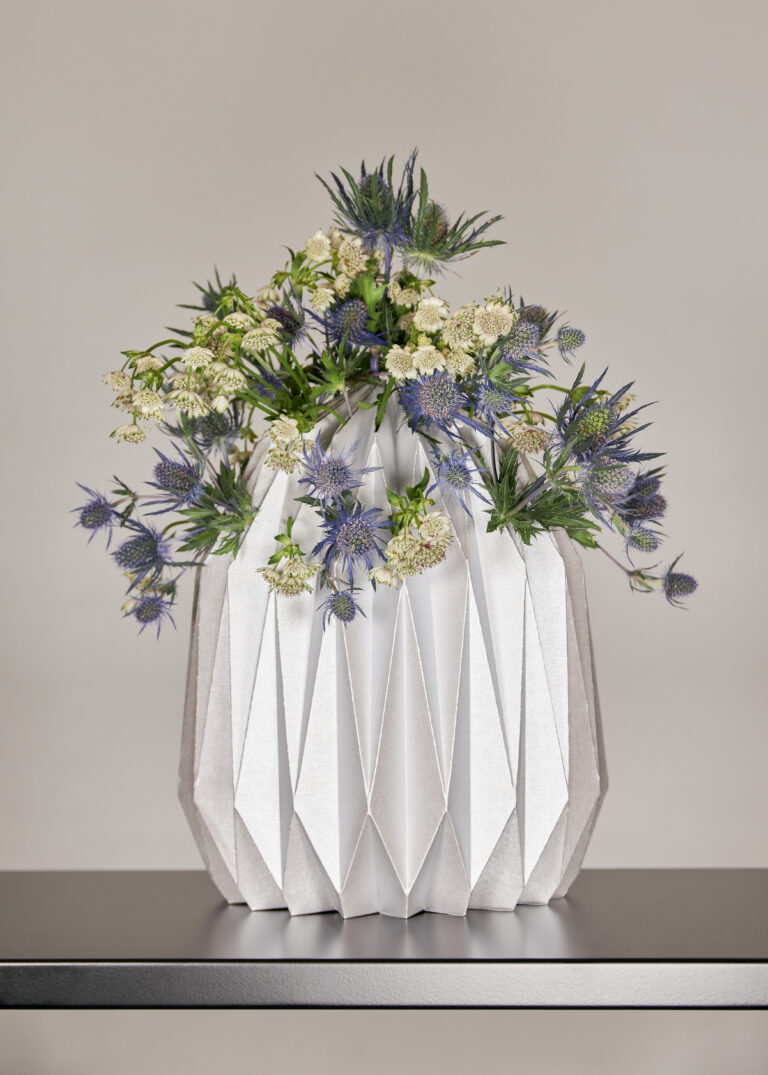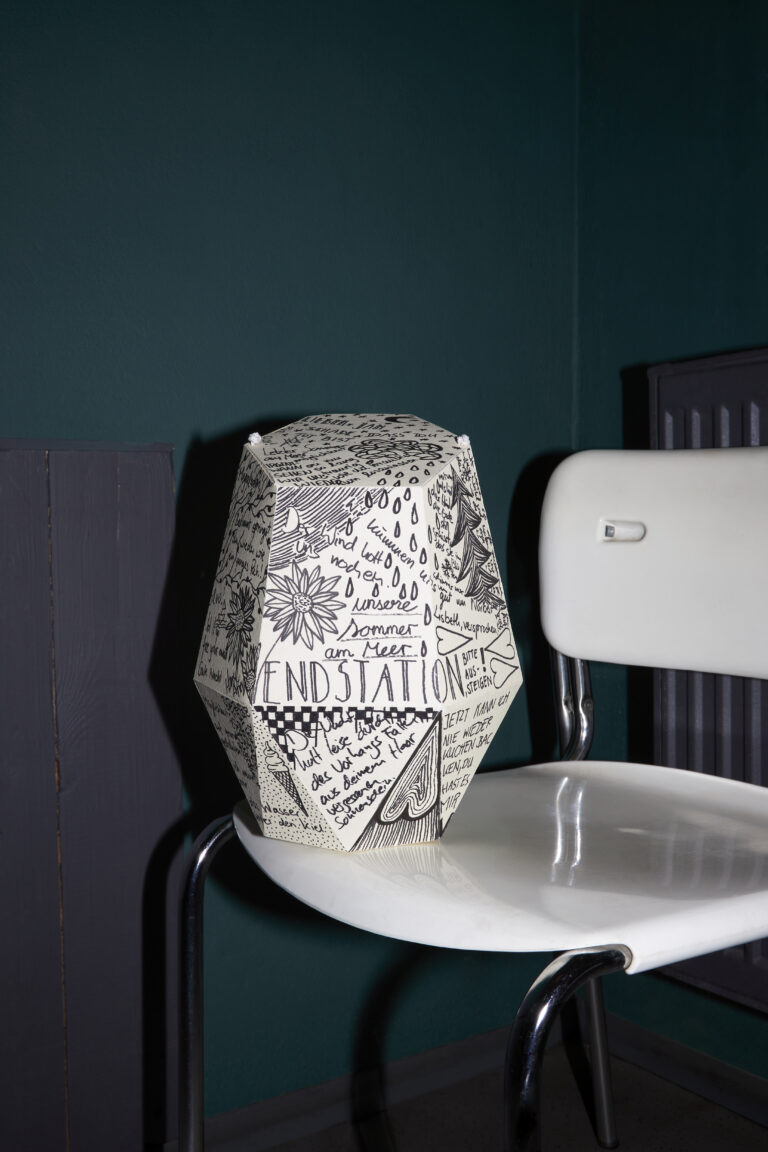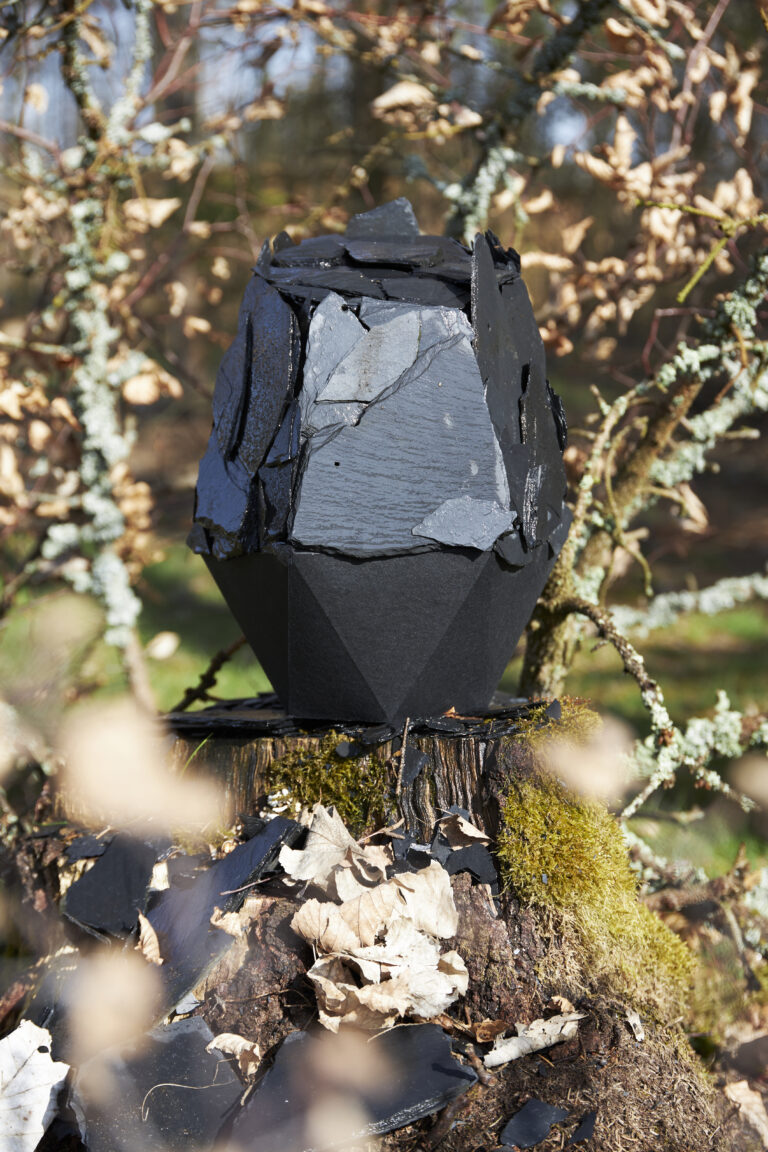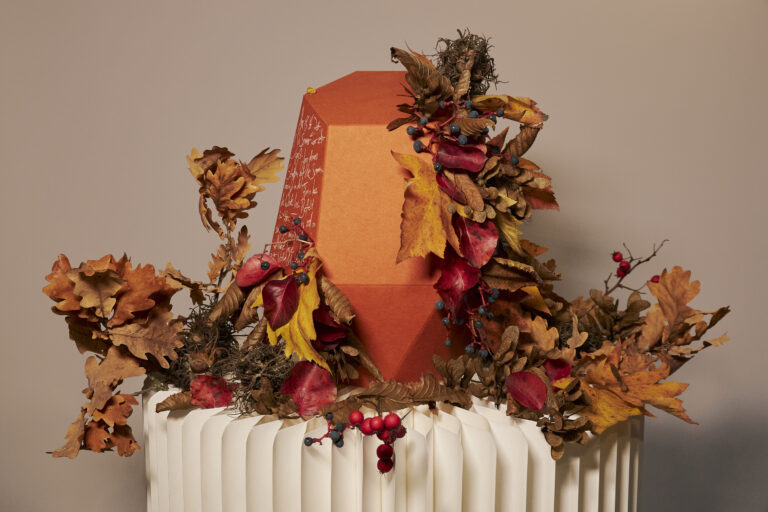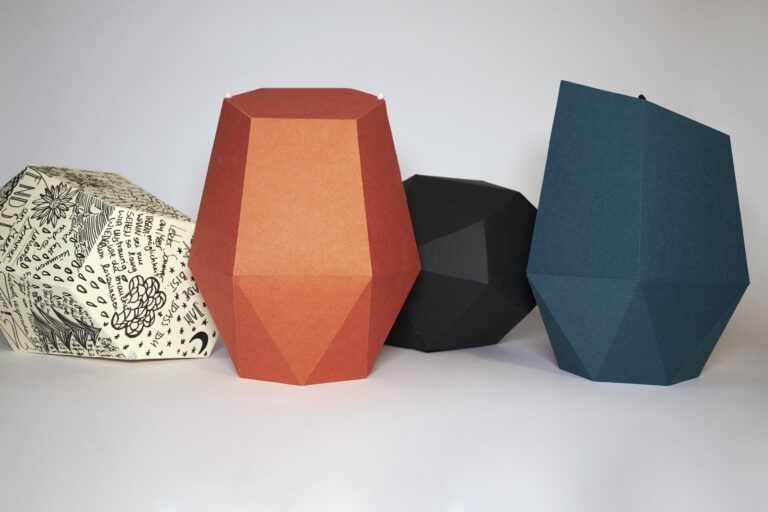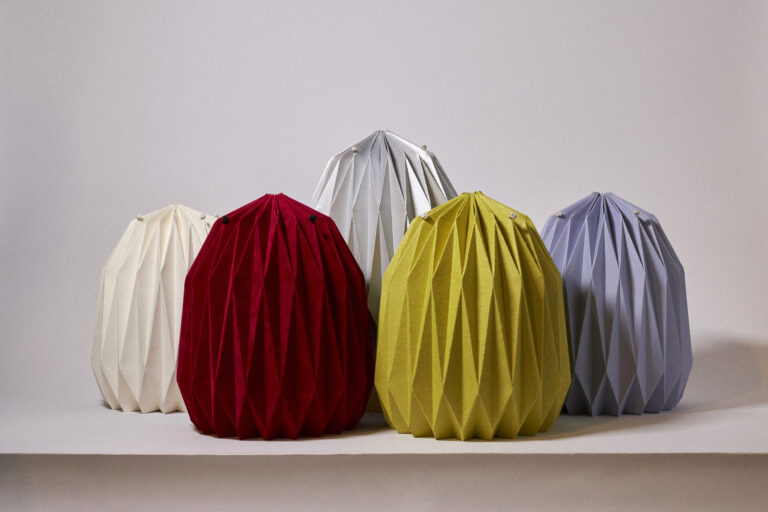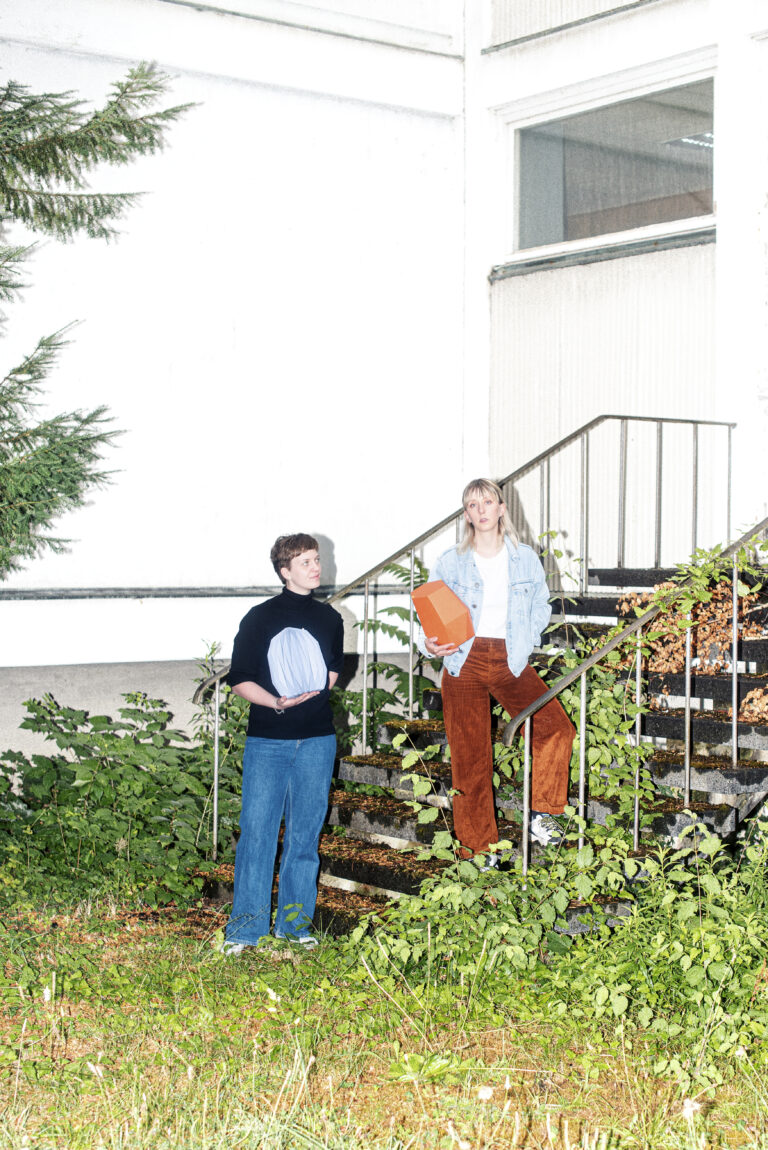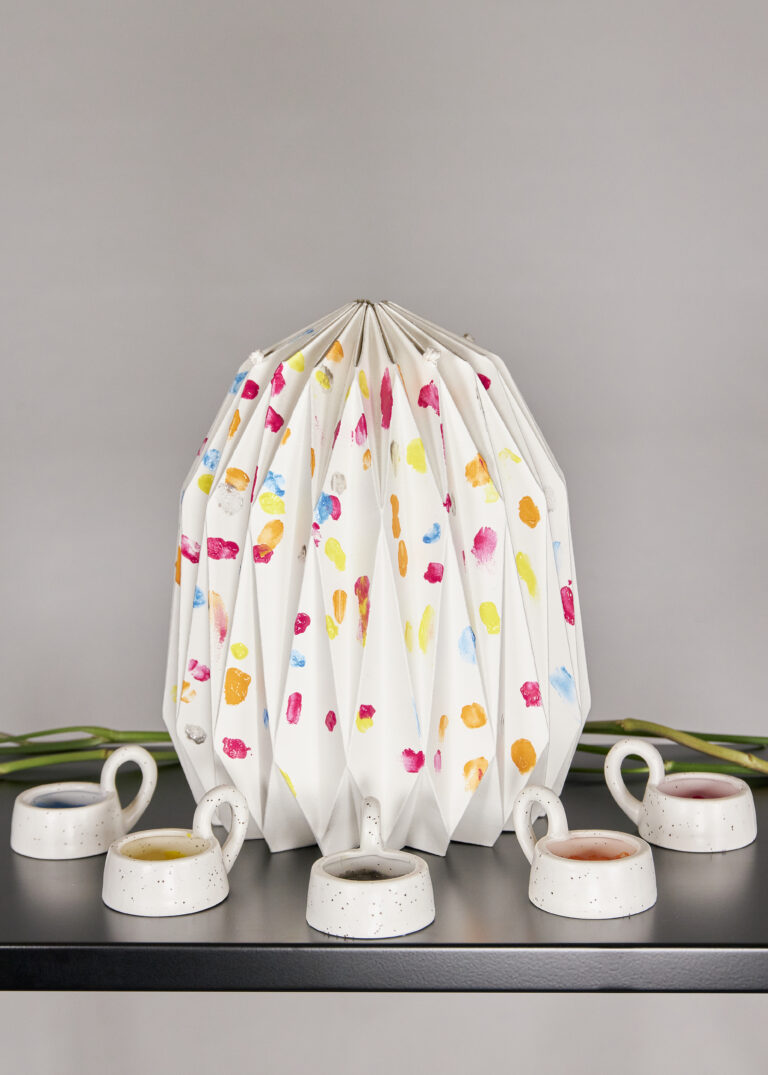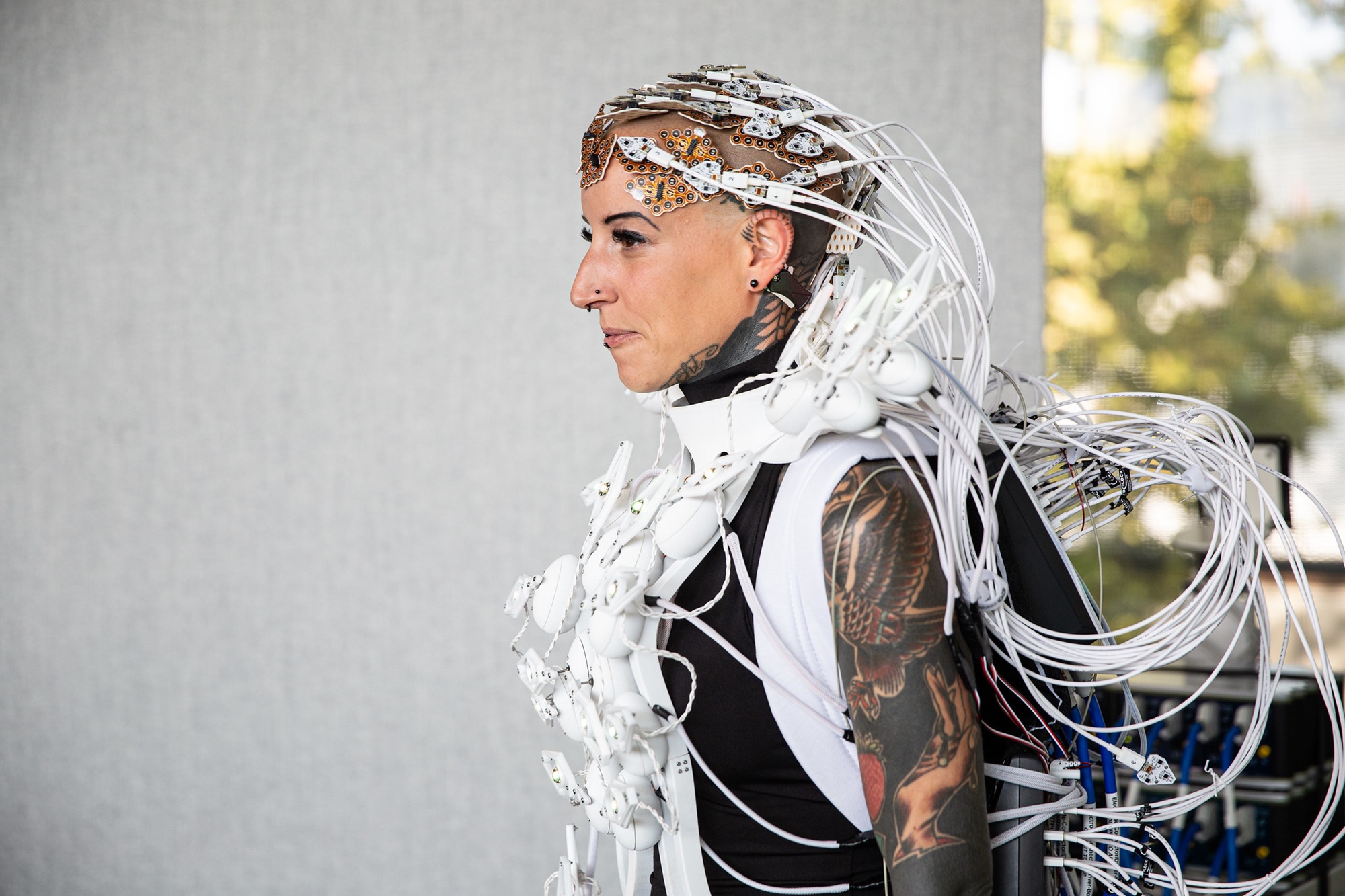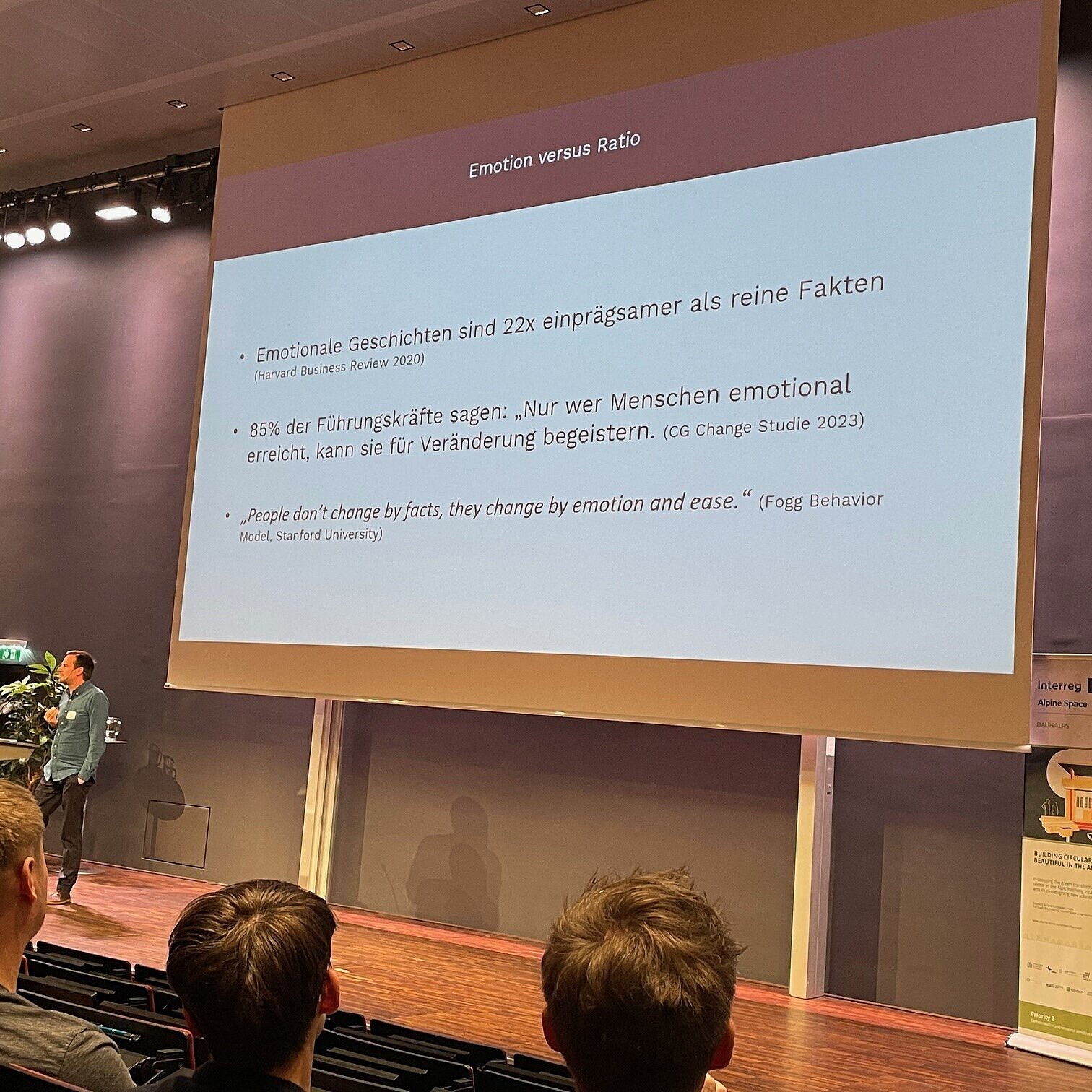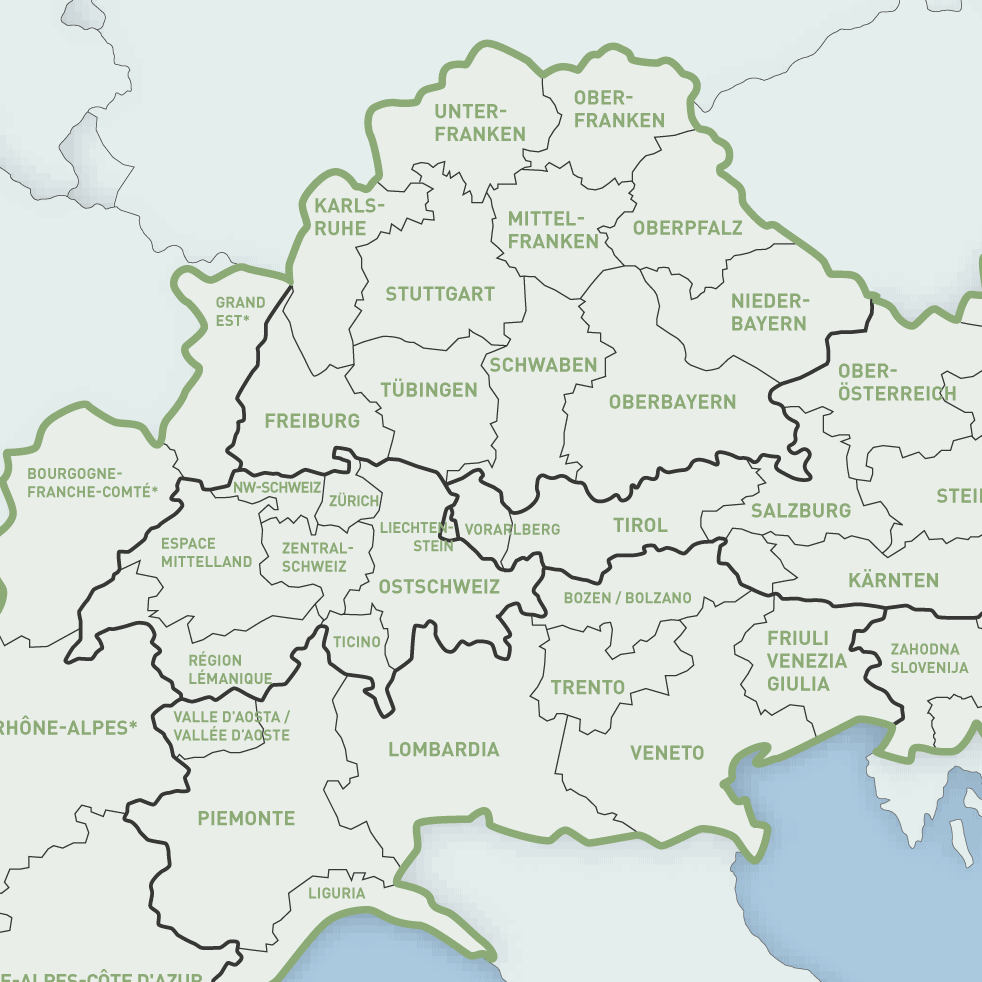#bayernkreativPORTRAIT: Katharina and Kristina are both from Upper Franconia and met in 2008 during a year abroad in southern England. Together they founded their company urnfold in Regensburg. They produce sustainable, aesthetic and customizable urns by hand, primarily from paper. urnfold has been awarded several prizes, including the German Design Award Special 2024. In this interview, the two cultural and creative pioneers explain how they came up with the idea of designing ecological paper urns and the importance of personalizing an urn in the mourning process. The two founders also talk about the positive response in a changing funeral industry and their plans for the future.

Dear Katharina and Kristina, first of all, congratulations on being named Cultural and Creative Pilots 2024! With your company urnfold, you are dedicated to the production of sustainable, aesthetic and personalized funeral urns and have thus created a very unusual concept. How did you both come up with this idea?
Thank you very much for the congratulations, we are very happy about the award! Kristina lost her father to cancer in 2014 and built him a wooden urn herself because she didn't think any of the urns on offer at the time were suitable. These seemed out of date and very impersonal. In hindsight, she realized that the personal confrontation and the design of the urn proved to be very helpful in the grieving process. Over the years, we have repeatedly experienced funeral services where the design of the urn did not match the person, so we took a look at the urn as a product from a design perspective. An urn is actually nothing more than a final package. Its task is to add aesthetic and emotional value to the ash capsule during the funeral service and to return it to the natural cycle as quickly and residue-free as possible after the burial. We wanted to offer people a basis for influencing the design of their urn and break with the classic, sometimes somewhat antiquated image of what an urn should look like.
You met in the south of England in 2008 and your company is based in Regensburg. How did it come about that you decided to set up a company together and why did you end up in Bavaria?
We are both originally from Bavaria, although not from the Upper Palatinate - we are from Upper Franconia. We spent a year abroad together in England and have been close friends ever since. We are very different, both in terms of our personalities and our skills, but we complement each other well. That helps with the foundation. The fact that we ended up in Regensburg was a bit of a coincidence: Katharina has lived here since 2018 and Kristina joined us from Bamberg in 2021, as she is studying for a Master's degree in Perimortem Sciences at the University of Regensburg alongside urnfold - an interdisciplinary study of dying, death and mourning.
You attach great importance to combining sustainability and aesthetics in your urns. You primarily use paper as the material for your urns. Where do you get the raw materials from and what does your production process look like?
We opted for paper as a material for reasons of sustainability and, above all, for reasons of design. Everyone is familiar with handling paper, which lowers the barrier to interacting with the urn as an object once again. Our paper comes from the Gmund handmade paper mill on Lake Tegernsee. Their sustainability standards are very high and match ours. At the same time, the paper is of a high quality and variety - this is crucial for such an emotionally important product as an urn. The paper for our burial urn at sea comes from the Notpla company in London. It is a by-product of the production of biodegradable plastic substitutes, is made from algae fibers and dissolves particularly well in seawater. The sheets of paper are first pre-folded by machine and then folded by hand and assembled into the finished urn.
The funeral industry is rather traditional. Did you encounter any resistance when you founded the company and how did you overcome it?
In principle, the industry is rather conservative and sluggish when it comes to innovation. That can sometimes be a bit difficult, especially when it comes to communication. Through personal contact with the funeral homes and, above all, through discussions with relatives and friends, many new impulses can be given and old concepts can be rethought. We also try to open up spaces for discussion on the topics of dying, death and mourning, either in person or via social media. In this way, new ideas are slowly finding their way into a traditional field. At the same time, we are not the only ones who would like to change things. The funeral industry has been changing for a few years now, more people see a need for action and that is why we are now working with many progressive funeral homes. We receive a lot of support and positive feedback from them. There is more and more of this.
Why do you think that the funeral industry has so far placed relatively little emphasis on sustainability, design and aesthetics?
In our opinion, this has to do with the fact that most people only think about this in acute cases. The situation is overwhelming and people have the feeling that they have to act according to a certain pattern, be it the products on offer or the timing and organization. There are many alternatives, but you have to know them. That's why we try to make people want to deal with the subject in advance and think about what they want for their own funeral and that of their loved ones. Because only then will personal values and requirements such as sustainability, design and aesthetics find a place in the implementation.
Death and grief are of course very sensitive topics and everyone has their own way of dealing with them. How do your products help people to cope with grief?
With our urns, we create a basis for personalization. That doesn't mean that you still have to design them, but they are designed to make them your own and to interact with them again. There can be a lot of comfort in the interaction, in being able to give something back, to get the feeling once again of establishing a connection to the deceased person. Especially at a cremation, the moment when you stand in front of the urn is very abstract. A short time ago there was still a person, now they are standing in front of you in a very condensed form as ashes in this container. We try to make this abstraction a little more tangible and bridge the distance to some extent by offering the possibility of personalization.
How do people react to your innovative approach? Are there any reservations or have you perhaps even hit a nerve that hasn't been touched before?
When we talk to people about our urns and the concept, we get very positive feedback. The fact that the urns have a certain lightness to them makes it easier for many people to get to grips with what is in itself a rather difficult subject. We also notice that, despite the taboo that exists on a personal level, there is a strong need for people to talk about death and everything that goes with it. In most cases, people are puzzled at first when we tell them that we make urns. They often assume they are lampshades. That's a good conversation starter. But then people immediately start talking about their own experiences. We hear many stories of past funerals, both beautiful and terrible. People also tell us their own wishes and thoughts about the end of their lives. We often hear "oh, if only you had been around back then" or "if only I had known what was possible...". We believe that we have touched a nerve. There are usually more concerns about the legal regulations or stability. However, we can quickly dispel these: our papers are of high quality and are very stable thanks to the folding. The urns comply with the regulations for German cemeteries and are even approved for the FriedWald.
What are your plans for the future?
We have spent the last two years working hard to get our first product - the paper urn - ready for the market. We have managed to do that. The product is ready and, after a few rounds of improvements, is now completely finished. In the immediate future, we now face the task of scaling and optimizing production so that we can devote ourselves to our long-term goal: to address the perimortem space from a design perspective in order to create sustainable, aesthetically pleasing alternatives and provide new impetus for the end of life.
